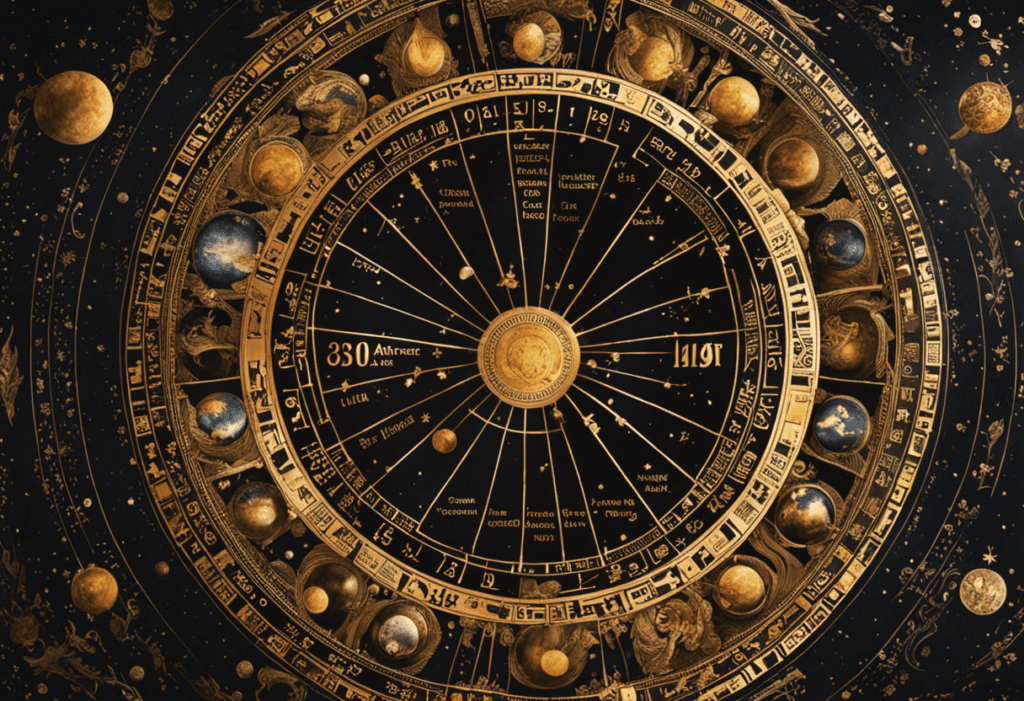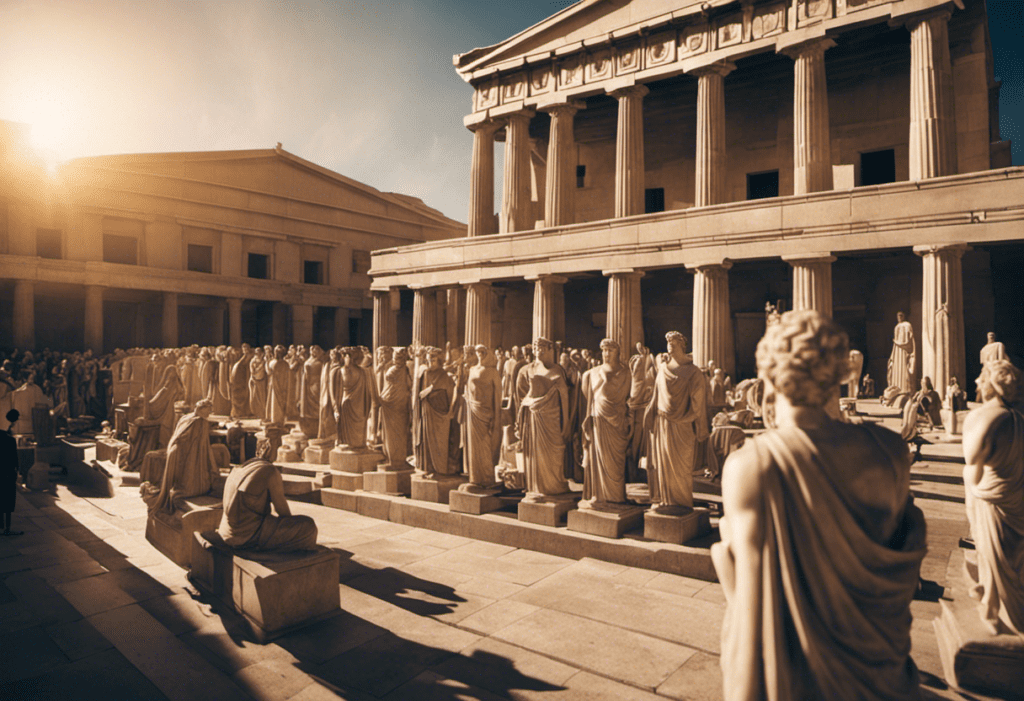Prepare to embark on a scholarly journey into the intricate and captivating world of the ancient Greek calendar.
This comprehensive guide unveils the remarkable structure and significance of this timekeeping system, encompassing the origins, lunar and solar cycles, months, intercalary months, and the vibrant festivals that shaped the Greek society.
Delve into the legacy of this calendar, examining its profound influence and adaptations throughout history.
Immerse yourself in the rich tapestry of Greek timekeeping, an awe-inspiring testament to human ingenuity.
Key Takeaways
- The Ancient Greek calendar was developed in the 8th century BCE and was influenced by lunar and solar calendars used by early Greeks and Egyptians.
- The calendar consisted of 12 lunar months with an intercalary month added every few years to align with the solar year. It was attributed to the gods and used for religious festivals and civic events.
- The lunar cycle played a significant role in Greek timekeeping, determining the timing of religious festivals, agricultural practices, and even animal behavior. It was also used for astronomical calculations and navigation.
- The solar year shaped the Greek calendar, influencing agricultural practices, festivals, and celestial navigation. Solstices and equinoxes were used as reference points to track the solar year.
The Origins of the Ancient Greek Calendar
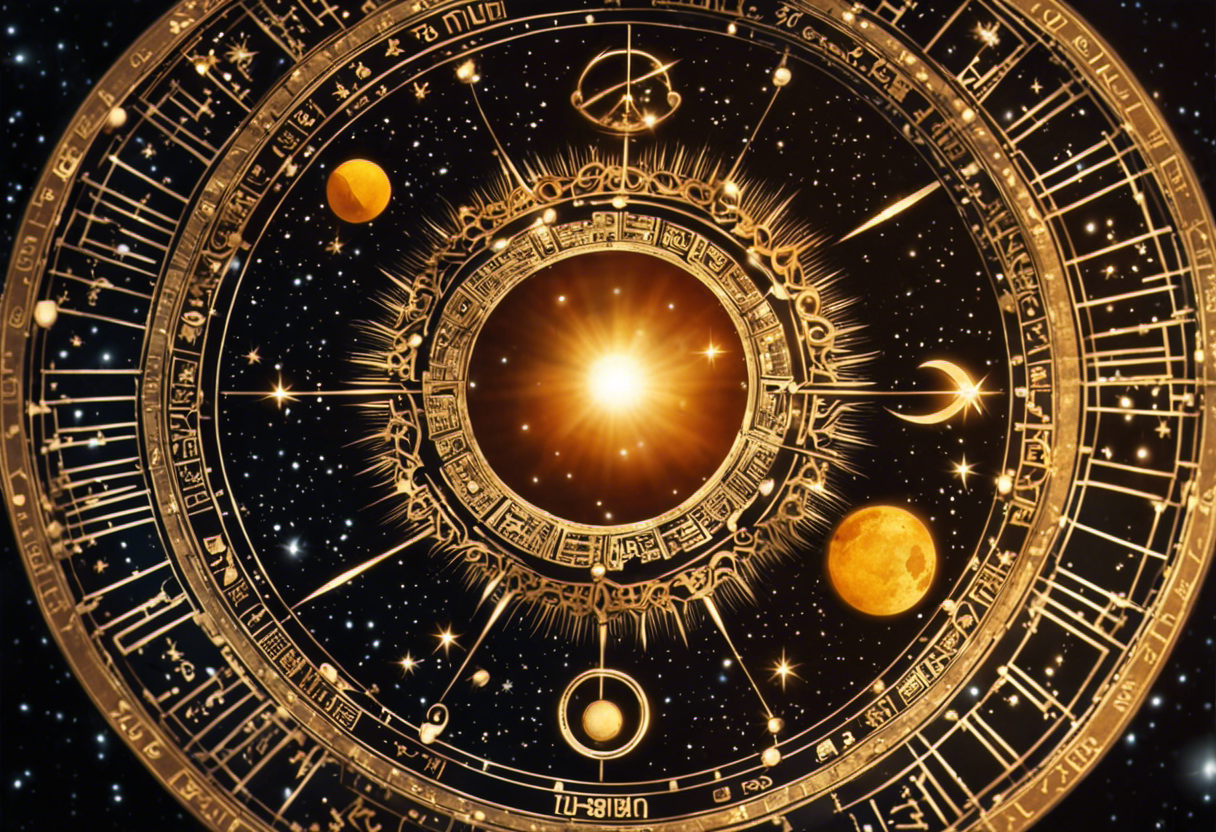

The origins of the ancient Greek calendar can be traced back to the 8th century BCE. The Greek calendar system was influenced by the lunar calendar used by the early Greeks, along with the solar calendar used by the Egyptians. However, the Greeks eventually developed their own unique calendar, which was based on a combination of lunar and solar observations.
The historical context of the ancient Greek calendar is important to understanding its development. The Greeks believed that time was a divine concept, and they attributed the creation of the calendar to the gods. The primary purpose of the calendar was to mark religious festivals and important civic events.
The ancient Greek calendar consisted of 12 lunar months, with each month beginning on the first sighting of the new moon. However, this lunar calendar did not precisely align with the solar year, causing the calendar to fall out of sync with the seasons. To correct this, the Greeks added an intercalary month, known as the ‘second Poseidon,’ every few years.
The Lunar Cycle and Its Significance


How does the lunar cycle intersect with the ancient Greek calendar, and what is its significance in marking time and events?
The ancient Greeks incorporated the lunar cycle into their calendar system, known as the lunisolar calendar. This calendar was based on the cycles of the moon and the sun, with each lunar month consisting of approximately 29.5 days. Here are four key points to understand the significance of the lunar cycle in the ancient Greek calendar:
- Significance of lunar phases: The lunar phases played a crucial role in determining the timing of religious festivals and agricultural practices. The Greeks believed that the moon’s phases had a direct impact on the growth of crops and the behavior of animals.
- Lunar cycle and agricultural practices: The ancient Greeks relied heavily on agriculture for their livelihood. They used the lunar calendar to determine the optimal time for sowing, harvesting, and other agricultural activities. The lunar phases provided important cues for planting and harvesting crops.
- Lunar months and religious festivals: The lunar months in the Greek calendar were used to determine the timing of religious festivals and rituals. The Greeks believed that certain gods and goddesses were associated with specific lunar months, and they would honor them through various ceremonies and celebrations.
- Lunar cycle and astronomical observations: The ancient Greeks were keen observers of the night sky. They used the lunar cycle to make astronomical calculations and predictions. The position of the moon in relation to the stars helped them track the passage of time and navigate the seas.
The Solar Year and Its Role in Greek Timekeeping


The solar year played a crucial role in Greek timekeeping, shaping their calendar and influencing their agricultural practices and religious festivals.
The Greeks used various methods to track the solar year, including the use of solstices and equinoxes as reference points.
These methods allowed them to align their calendar with the changing seasons and ensure the proper timing of important events.
Importance of Solar Year
During the era of Ancient Greece, the solar year played a fundamental role in the meticulous timekeeping system of the Greeks. The importance of the solar year can be attributed to its direct relevance to agriculture and the reliance of the Greeks on the seasonal changes for their farming practices. Additionally, the solar year was crucial in the Greeks’ astronomical observations, which helped them understand celestial phenomena and navigate the seas.
The importance of the solar year in Greek timekeeping is evident in the following ways:
- Agricultural Significance: The Greeks depended heavily on agriculture for their livelihood, and the solar year provided them with a reliable framework for planting and harvesting crops. They observed the changing seasons and aligned their agricultural activities accordingly.
- Festivals and Religious Observances: The Greek calendar was filled with festivals and religious celebrations that were linked to the solar year. These events were significant in the social and cultural life of the Greeks, and the accurate tracking of the solar year ensured that the festivals were held at the appropriate time.
- Celestial Navigation: Greek sailors relied on astronomical observations to navigate the seas. The solar year helped them determine their position by observing the position of the sun in the sky and its changes throughout the year.
- Timekeeping: The solar year formed the basis for the Greek calendar, which was used to measure time and organize daily life. It provided a consistent and predictable framework for scheduling events and activities.
Greek Timekeeping Methods
Greek timekeeping methods revolved around the solar year and its crucial role in organizing daily activities and events in ancient Greek society. The Greeks used various time measurement techniques to keep track of time and ensure that their calendars aligned with the solar year.
One of the most important methods was the use of astronomical observations, such as the solstices and equinoxes, to determine the changing seasons and the length of the year. They also relied on the movement of celestial bodies, such as the sun and the moon, to determine the passage of time.
Additionally, the Greeks developed sophisticated mathematical calculations to further refine their timekeeping methods. These included methods for measuring the duration of days, months, and years, as well as techniques for calculating the positions of celestial bodies.
The Months of the Ancient Greek Calendar


With a total of twelve months, the ancient Greek calendar was divided into various periods, each marked by specific festivals and religious observances. The Greek calendar months were based on lunar cycles and were named after various gods, heroes, and agricultural activities.
Here is a breakdown of the months in the ancient Greek calendar:
- Hekatombaion: This was the first month of the year and was named after Hekate, the goddess of magic and witchcraft. It marked the beginning of the summer season and was associated with the first harvest.
- Metageitnion: Named after Apollo Metageitnion, this month focused on the transition period between summer and autumn. It was a time for religious festivals and celebrations.
- Boedromion: This month was dedicated to the god Apollo Boedromios and was associated with military campaigns and preparations for war.
- Pyanepsion: Named after the festival of Pyanepsia, which celebrated the harvest of beans, this month marked the transition from autumn to winter.
These are just a few examples of the twelve months in the ancient Greek calendar. Each month had its own significance and was marked by specific religious observances and festivals. The calendar was an integral part of ancient Greek timekeeping and played a significant role in their culture and religious practices.
The Intercalary Months: Balancing the Lunar and Solar Cycles
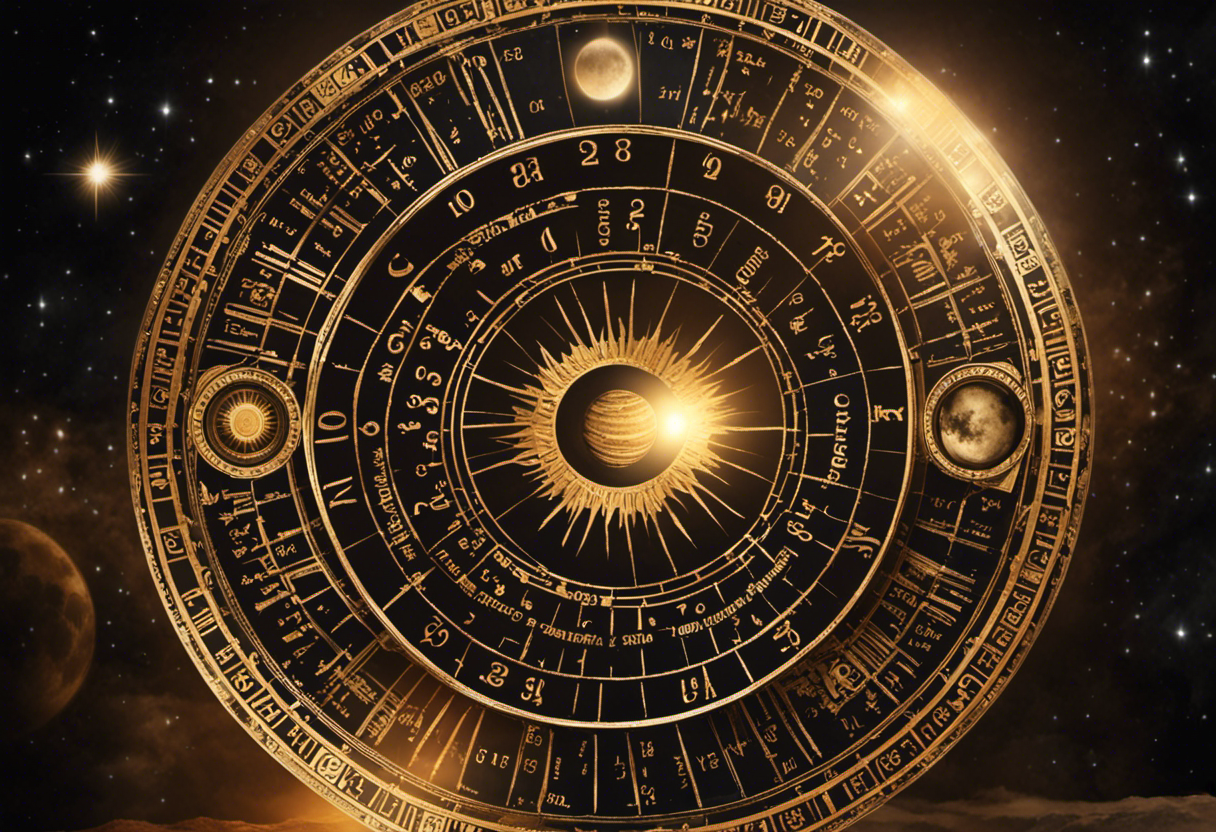

To maintain a harmonious synchronization between the lunar and solar cycles, the ancient Greek calendar incorporated intercalary months. These additional months were inserted at irregular intervals to ensure that the calendar year aligned with both the lunar and solar cycles.
The Greek calendar was primarily lunar-based, with each month corresponding to a complete lunar cycle. However, the lunar year is approximately 354 days, which is shorter than the solar year of 365.25 days. This discrepancy meant that the lunar months would gradually fall out of sync with the solar year.
To address this issue, the Greeks introduced the concept of intercalary months. These months were inserted periodically to balance the lunar and solar cycles. The decision to add an intercalary month was made by a council of astronomers and priests who closely observed the movements of the moon and the sun. They would determine when an extra month was needed to keep the calendar in alignment with the seasons.
The intercalary months were added after the last month of the year, and they were given names such as ‘Poseideon II’ or ‘Poseideon B’. These additional months allowed the Greek calendar to maintain its lunar-based structure while also ensuring that it remained synchronized with the solar year.
Festivals and Celebrations: An Important Part of the Calendar
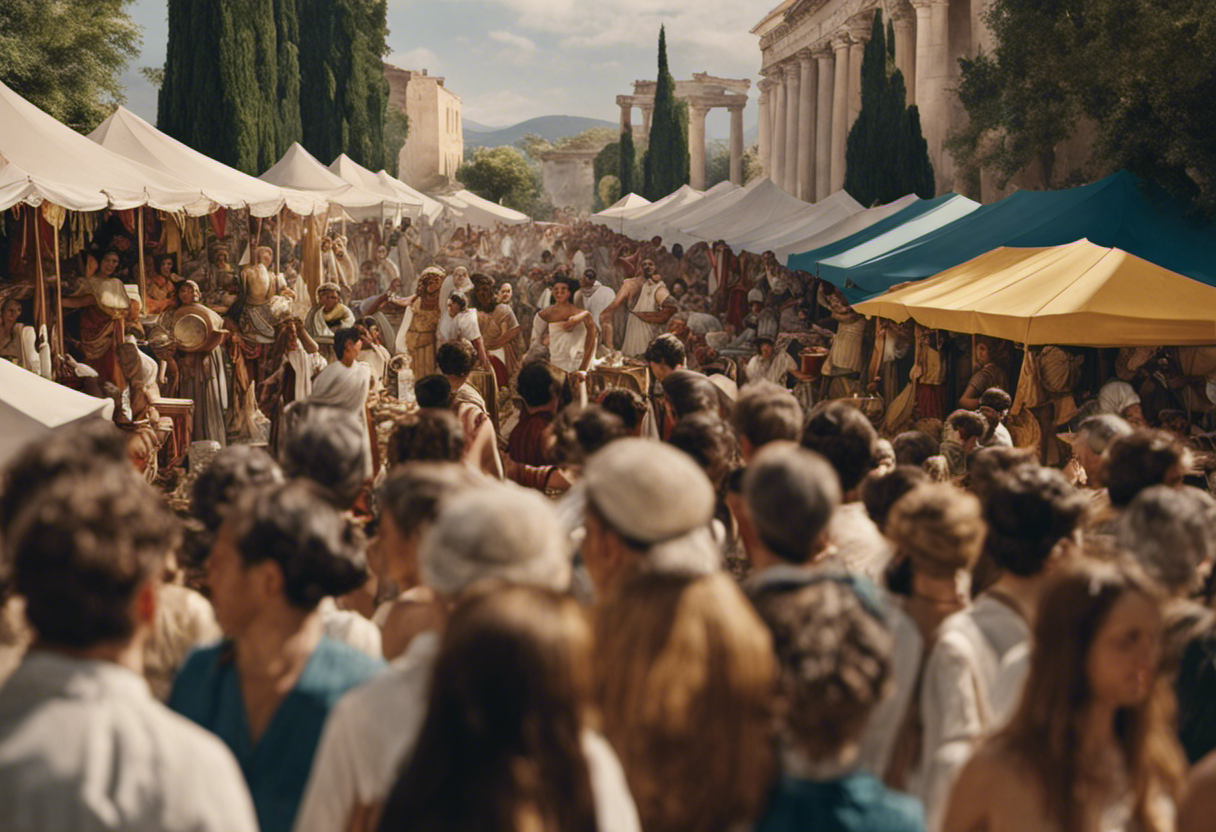

Festivals and celebrations played a significant role in the ancient Greek calendar, serving as important markers of time and cultural events. These rituals were deeply rooted in the traditions and customs of the Greek society, reflecting their religious beliefs, historical context, and social practices.
Understanding the origins and historical development of these festivals provides valuable insights into the ancient Greek culture and its connection to the calendar system.
Significance of Rituals
Rituals and celebrations hold a vital role in the Ancient Greek Calendar, serving as a cornerstone for cultural and religious practices. These rituals were deeply ingrained in the daily lives of the ancient Greeks and were seen as a way to honor and appease the gods.
The significance of rituals in the Greek calendar can be understood through the following key points:
- Religious Devotion: Ritual practices were an integral part of ancient Greek religious devotion. They provided a means for individuals and communities to express their piety and seek divine favor.
- Community Bonding: Festivals and celebrations brought communities together, fostering a sense of unity and shared identity. These events provided an opportunity for social interaction and strengthened social ties.
- Cultural Preservation: Through rituals, the ancient Greeks preserved and transmitted their cultural heritage. These practices often included reenactments of mythological events and rituals that were passed down from generation to generation.
- Seasonal Alignment: Many rituals and celebrations in the Greek calendar were linked to the agricultural cycle and the changing seasons. These events marked important milestones in the agricultural calendar and were believed to ensure a bountiful harvest.
Cultural Traditions and Customs
Why were festivals and celebrations such an integral part of the Ancient Greek Calendar?
Festivals and celebrations held great importance in the Ancient Greek Calendar due to their deep-rooted cultural practices and traditional celebrations. These events provided opportunities for the community to come together, honor the gods, and showcase their devotion and gratitude.
Festivals were not only religious in nature but also served as platforms for artistic and athletic competitions. These events fostered a sense of unity and identity among the Greek people, reinforcing their shared values and beliefs.
They also provided a break from daily routines and offered a space for socializing, entertainment, and indulgence. The festivals and celebrations in the Ancient Greek Calendar reflected the rich tapestry of Greek culture, allowing individuals to connect with their heritage and strengthen their community bonds.
Historical Context and Origins
- The historical context and origins of festivals and celebrations in the Ancient Greek Calendar can be traced back to the earliest days of Greek civilization. These festivals held a significant place in Greek society, serving as a means of honoring gods, commemorating historical events, and fostering a sense of community.
- The festivals and celebrations in the Ancient Greek Calendar had a profound historical significance. They played a crucial role in shaping the religious and social fabric of ancient Greece. These events provided an opportunity for the Greeks to showcase their devotion to their gods and reinforce their cultural identity.
- The cultural impact of these festivals and celebrations cannot be overstated. They served as a platform for artistic expression, with theatrical performances, music, and poetry being integral parts of the festivities. These events brought communities together, fostering a sense of unity and shared heritage among the Greeks.
- Furthermore, these festivals and celebrations had a lasting impact on Western civilization. Many of the traditions and practices associated with the Ancient Greek Calendar have been adopted and adapted by later cultures, influencing various aspects of art, literature, and religious practices.
The Legacy of the Ancient Greek Calendar: Influence and Adaptations
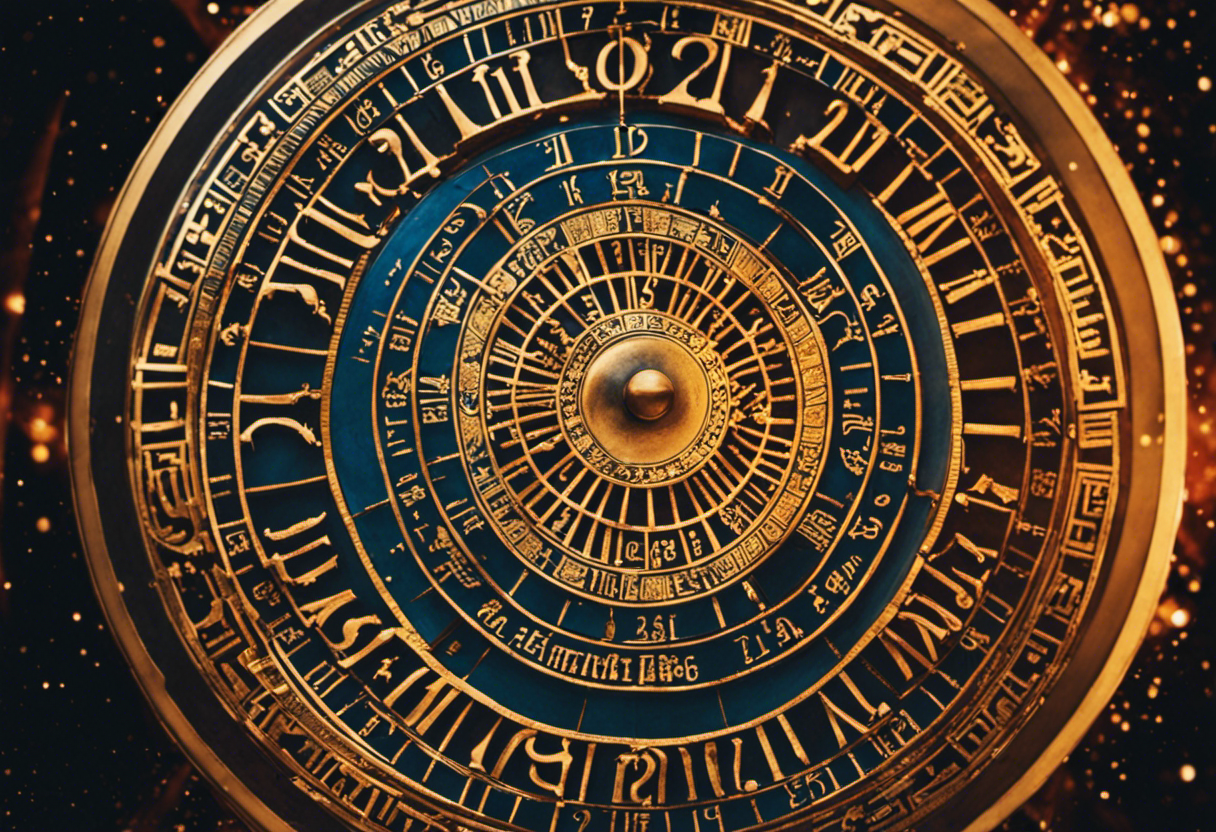

The widespread adoption of the ancient Greek calendar by various civilizations throughout history demonstrates its enduring influence on the measurement and organization of time.
The Greek calendar served as a model for many subsequent calendars, and its influence can be seen in modern calendars used in different parts of the world.
One of the most significant adaptations of the Greek calendar is the Julian calendar, introduced by Julius Caesar in 45 BCE.
The Julian calendar was based on the Greek calendar but made some modifications to improve its accuracy. It became the standard calendar in the Roman Empire and was later adopted by many European countries.
The Julian calendar, in turn, served as the basis for the Gregorian calendar, which is the most widely used calendar today.
The influence of the Greek calendar is not limited to Europe. In ancient Egypt, the Egyptian calendar was influenced by the Greek calendar during the Ptolemaic period.
The Egyptian calendar incorporated Greek elements such as the 365-day year and the leap year concept.
In conclusion, the legacy of the ancient Greek calendar is evident in its influence on modern calendars and its adaptations in other cultures.
Its impact can be seen in the Julian and Gregorian calendars used in Europe, as well as in the Egyptian calendar during the Ptolemaic period.
The enduring influence of the Greek calendar highlights its importance in shaping the measurement and organization of time throughout history.
Conclusion
In conclusion, the ancient Greek calendar, with its intricate structure and careful balance between lunar and solar cycles, stands as a testament to the ingenuity and sophistication of ancient Greek civilization.
Its legacy can be seen in the influence it has had on subsequent calendars and timekeeping systems.
Just as the celestial bodies guided the Greeks in their daily lives, so too does the study of this calendar provide us with a glimpse into their rich history and cultural heritage.

